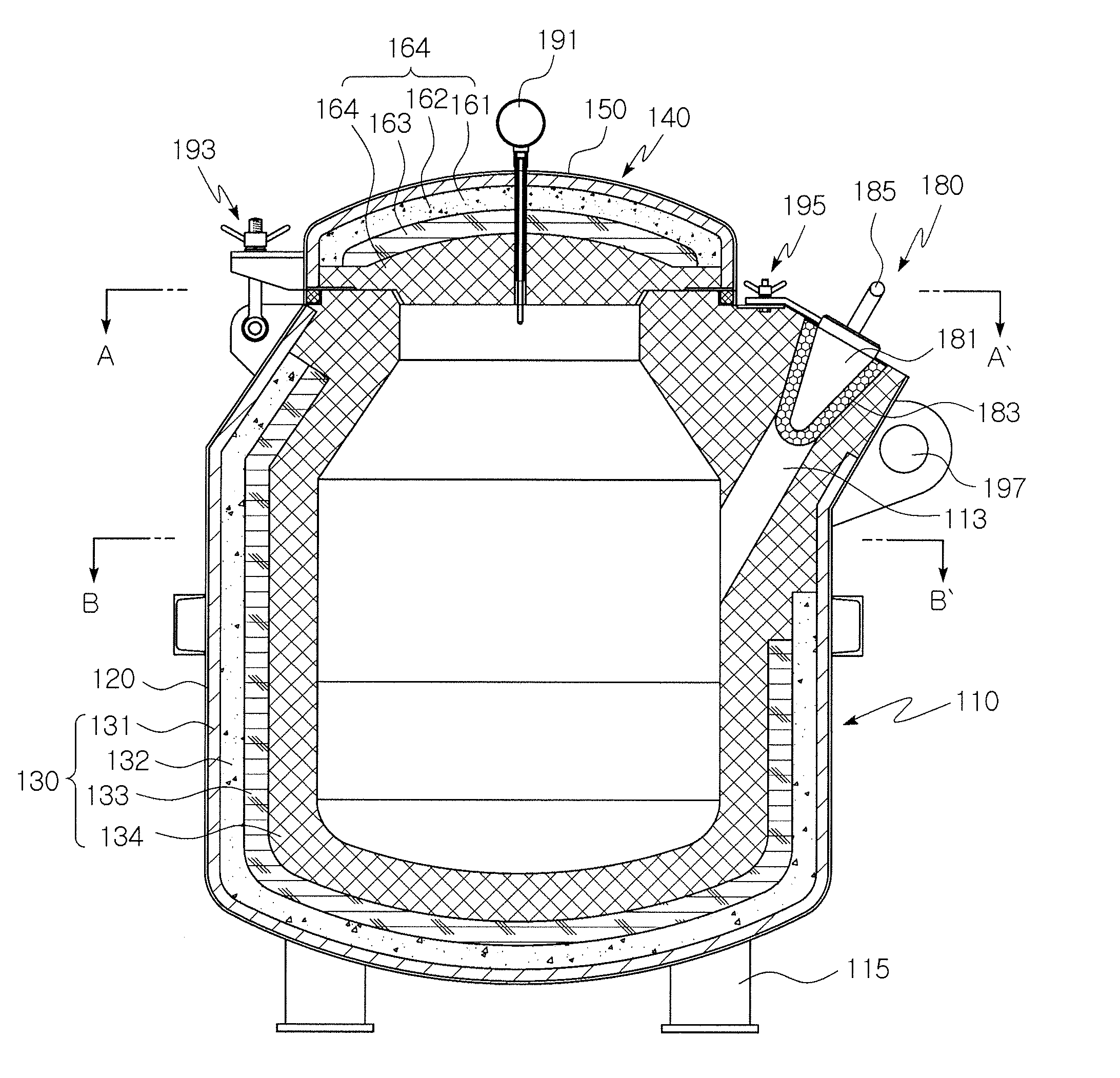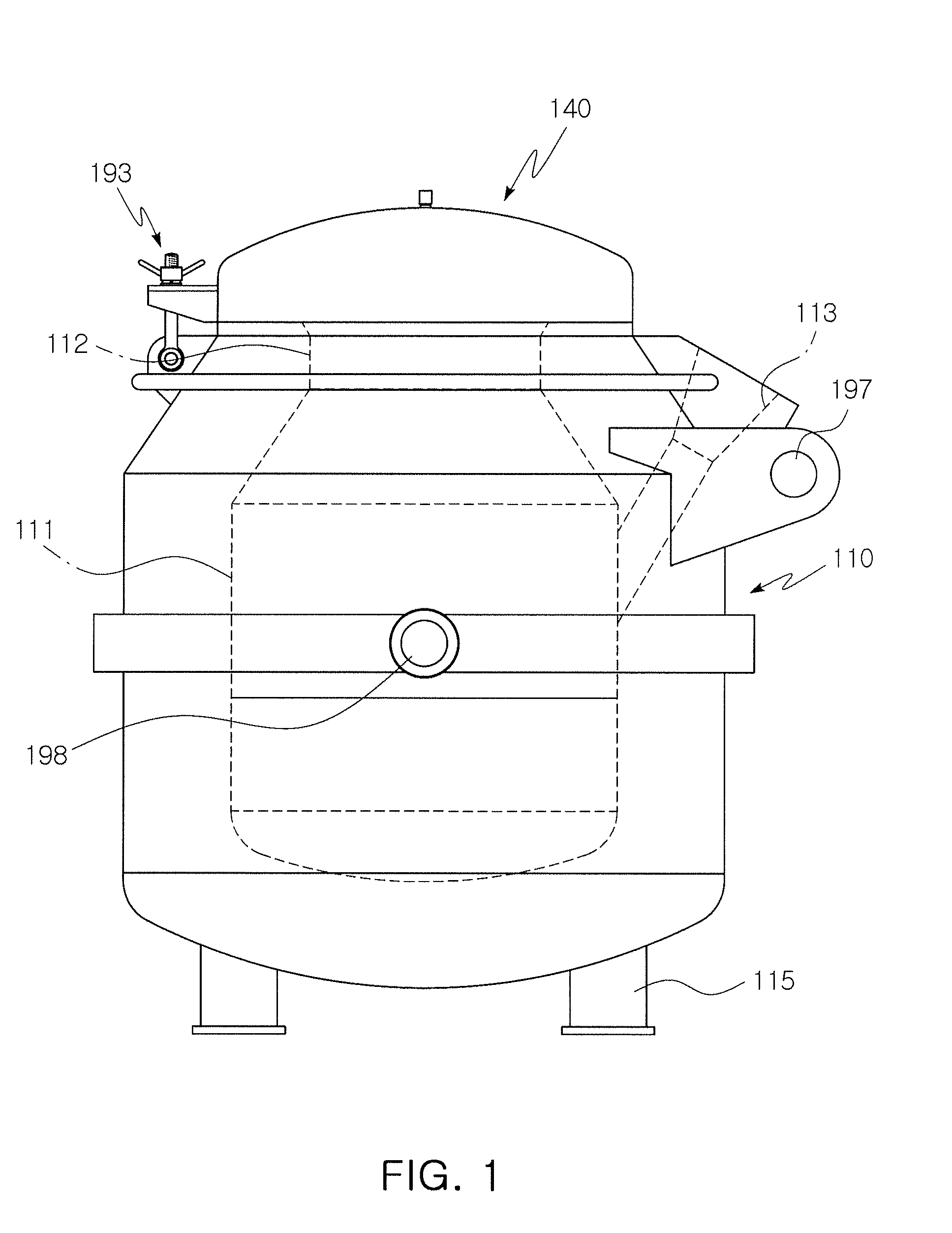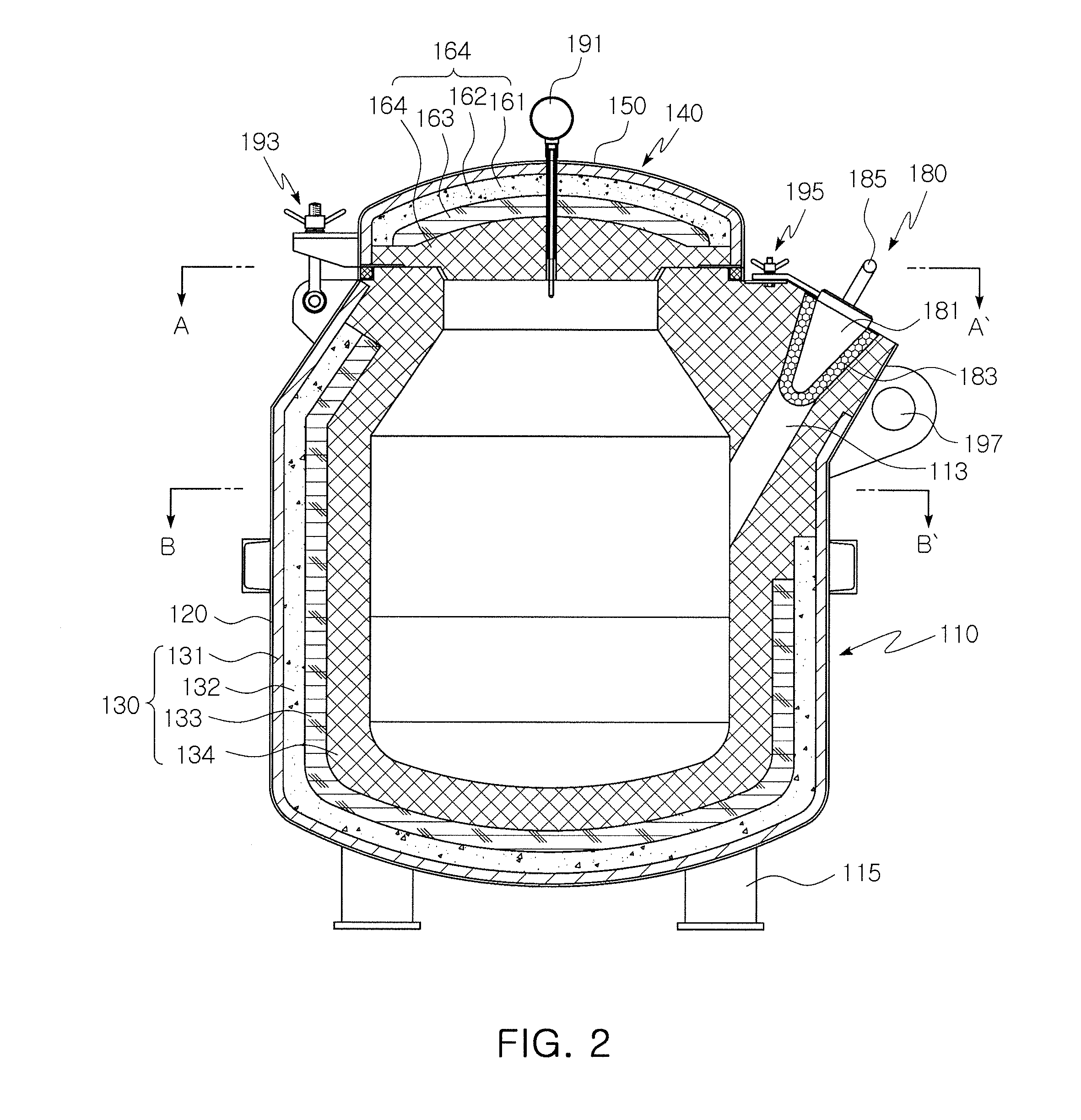High-heat-retention ladle for carrying molten aluminum
a technology of molten aluminum and ladles, which is applied in the direction of manufacturing converters, manufacturing tools, furniture, etc., can solve the problems of reducing cost efficiency and productivity, high manpower and facilities costs, and casting plants incur a great amount of time and expense, and achieves excellent advantages in terms of productivity, high manpower and facilities costs, and prolonging the cycle of aluminum supply.
- Summary
- Abstract
- Description
- Claims
- Application Information
AI Technical Summary
Benefits of technology
Problems solved by technology
Method used
Image
Examples
Embodiment Construction
[0031]Reference will now be made in detail to various embodiments of the present invention(s), examples of which are illustrated in the accompanying drawings and described below. While the invention(s) will be described in conjunction with exemplary embodiments, it will be understood that the present description is not intended to limit the invention(s) to those exemplary embodiments. On the contrary, the invention(s) is / are intended to cover not only the exemplary embodiments, but also various alternatives, modifications, equivalents and other embodiments that may be included within the spirit and scope of the invention as defined by the appended claims.
[0032]FIG. 1 is an elevational view showing the outline of a high-heat-retention ladle for carrying molten aluminum according to an exemplary embodiment of the invention, FIG. 2 is a front elevational cross-sectional view showing the ladle shown in FIG. 1, FIG. 3 is a top plan cross-sectional view taken along the line A-A′ in FIG. 2...
PUM
| Property | Measurement | Unit |
|---|---|---|
| Cooling rate | aaaaa | aaaaa |
| Weight | aaaaa | aaaaa |
| Heat | aaaaa | aaaaa |
Abstract
Description
Claims
Application Information
 Login to View More
Login to View More - R&D
- Intellectual Property
- Life Sciences
- Materials
- Tech Scout
- Unparalleled Data Quality
- Higher Quality Content
- 60% Fewer Hallucinations
Browse by: Latest US Patents, China's latest patents, Technical Efficacy Thesaurus, Application Domain, Technology Topic, Popular Technical Reports.
© 2025 PatSnap. All rights reserved.Legal|Privacy policy|Modern Slavery Act Transparency Statement|Sitemap|About US| Contact US: help@patsnap.com



